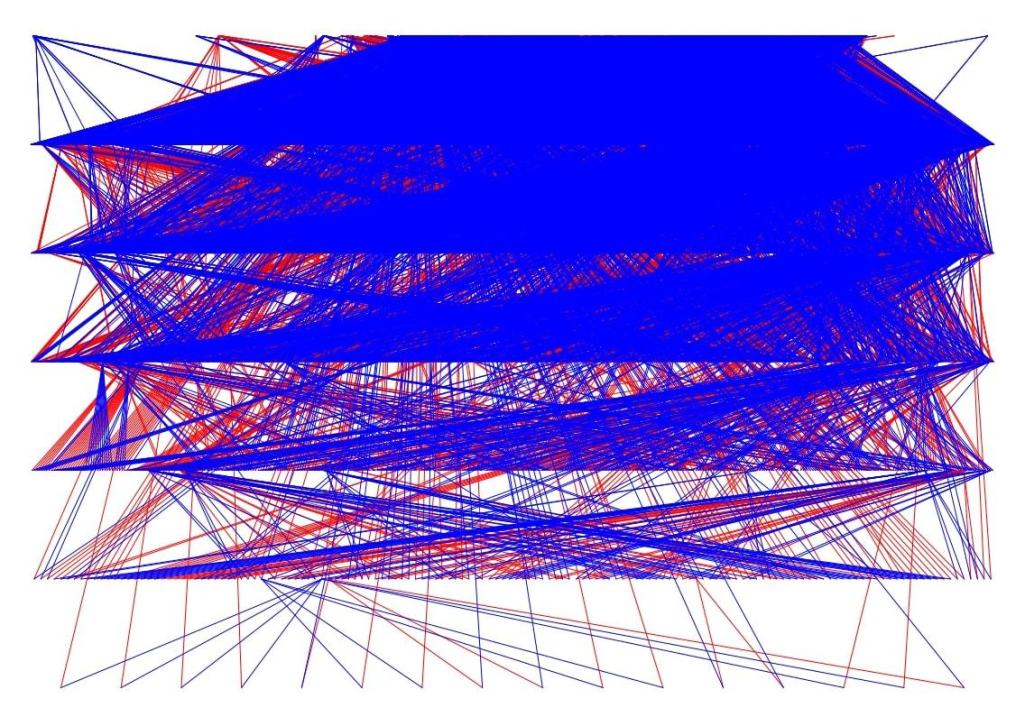Graduate student Drew Sauve recently returned from Cooper Island. He describes his collaboration with George in this guest post.

The Black Guillemots on Cooper Island are one of many wild populations that are responding to climate change by changing when they lay their eggs. These Arctic seabirds want to lay their eggs as soon as the winter snow melts and spring begins, because their breeding season—from first access to a nest cavity to departure of chicks—is 80 days, an exceptionally long breeding period for a bird. Parent guillemots have to have their young ready to fly off to sea before fall snow accumulation begins to block entrances to nest cavities. In recent years, with sea ice retreating offshore in late summer, early breeding has the benefit of being able to provision young when the preferred prey of Arctic Cod is still readily available.
While there are decades of data that show spring snowmelt is occurring earlier in northern Alaska and, allowing guillemots to lay their eggs earlier, my research is focused on whether Black Guillemots are evolving to lay their eggs earlier.
George has created a detailed banding dataset, where every parent has a numbered metal band, and a unique colour band combination; all of their nestlings are banded before fledging. Using this data set, I can construct family trees for the birds breeding on the island. Family trees or pedigrees are often used in studies of human health or livestock breeding. In the rare case where we have long-term pedigrees in wild populations, geneticists can use them to determine genetic variation in a trait—in this case, when birds lay their eggs.
The amount of genetic variation or the potential for genetic change in a key trait like egg-laying date could determine whether a population will be able to adapt to climate change.
The analyses we do with a pedigree are similar to what a farmer might do when trying to select cows that produce more milk. Some cows and their families might produce more milk, so the farmer would select those cows when breeding their stock. Instead of cow families that produce lots of milk, I tried to find guillemot families that laid their eggs earlier than others in response to snowmelt. However, instead of a farmer selecting cows I wanted to see if climate change was selecting for earlier breeding guillemots.
Ultimately, there were no family groups that tended to lay earlier than others. Using my farmer example again, this would be like trying to select a cow with high milk output when all the families of cows produced the same amount of milk. The farmer would be unable to improve their herd because all the cows are the same with regards to milk production.
What this means on Cooper Island is that Black Guillemots are unlikely to evolve earlier laying dates to match warmer temperatures and the change in laying-date we’ve observed so far is not because of evolution. Rather individual birds are behaviorally adjusting their laying date due to changes in snowmelt.
Unfortunately, this behavioural response to snowmelt doesn’t seem to be enough of a response as the birds are still struggling to raise offspring in the warming Arctic.
The Cooper Island data demonstrate the power of long-term, detailed data collection. Just as George did not intend to study climate change when he started the study in 1975, I also do not think he intended on collecting data that one day would be useful for building a pedigree with multiple generations of Black Guillemots, but he did just that.
The value of long-term datasets might not always be apparent when starting the study, but much of our understanding of evolution, behavior, ecology, and responses to climate change come from research that span decades. I suspect that the Cooper Island dataset and others like it will continue to be valuable in the future.
